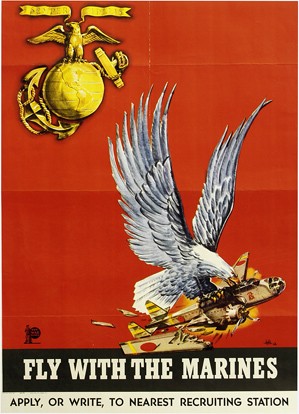
Marine Corps Aviation Centennial
On May 22, 1912, First Lieutenant Alfred A. Cunningham reported to the aviation encampment at Greenbury Point, Maryland, for the purpose of receiving flight instruction, that date considered the birthday of U.S. Marine Corps Aviation. Over the course of the ensuing century, flying leathernecks left a lasting imprint in the annals of air warfare. In the skies over Haiti and Nicaragua, they pioneered close air support and dive-bombing, tactics that were put into action in amphibious invasions at such places as Guadalcanal, Peleliu, and Okinawa. Adapting rotary-wing aviation to the battlefield, Marine aviators spearheaded the development of heliborne assaults as a component of the Corps’ expeditionary warfare mission. Whether becoming the first American to orbit the Earth as one of the nation’s pioneering astronauts or combating the enemy from jungle airstrips or aircraft carrier flight decks, Marine aviation personnel have demonstrated a legacy of valor in hostile skies around the globe that is a centerprice of the very emblem of the U.S. Marine Corps. This online exhibit features items displayed in a temporary museum exhibit titled “100 Years of Marine Aviation” supplemented by artifacts and images drawn from the collection of the National Naval Aviation Museum.


